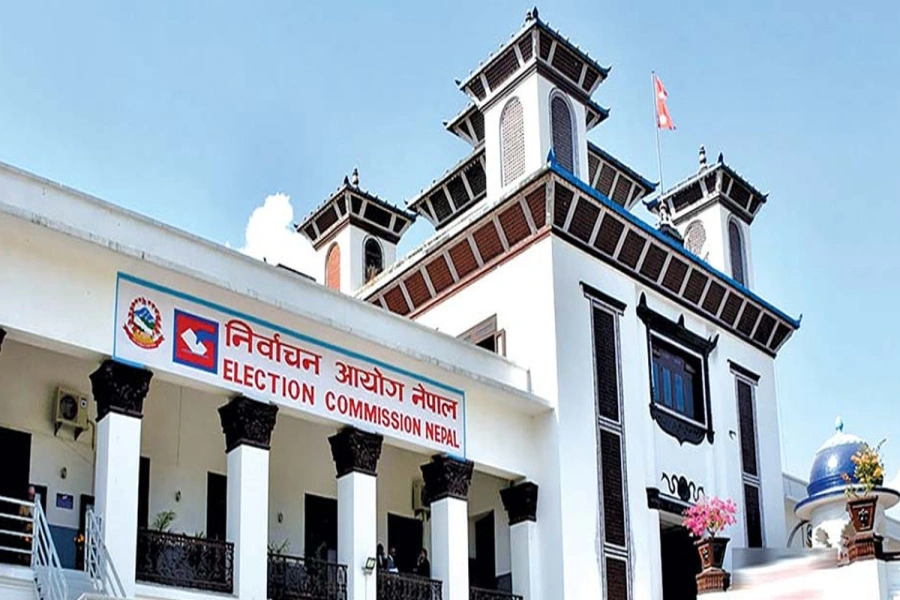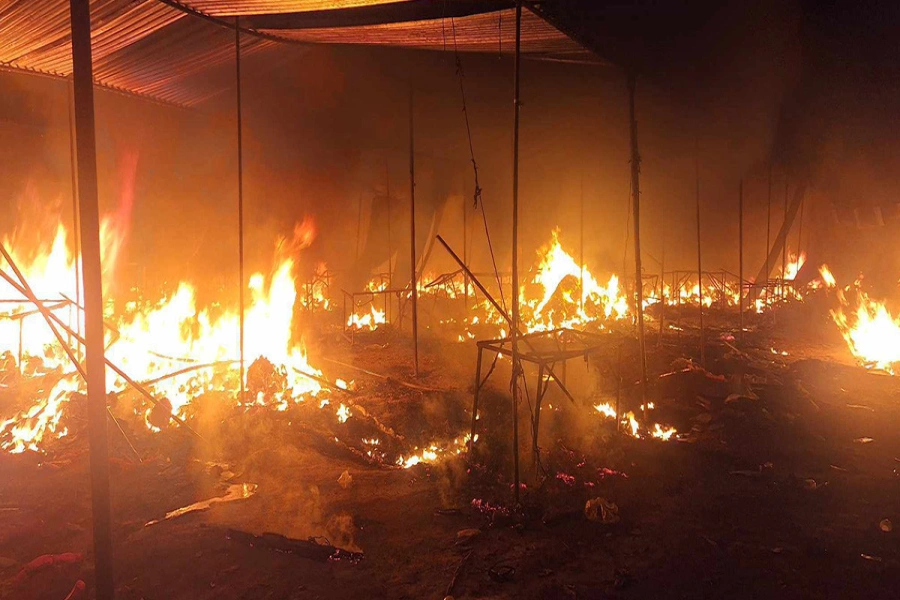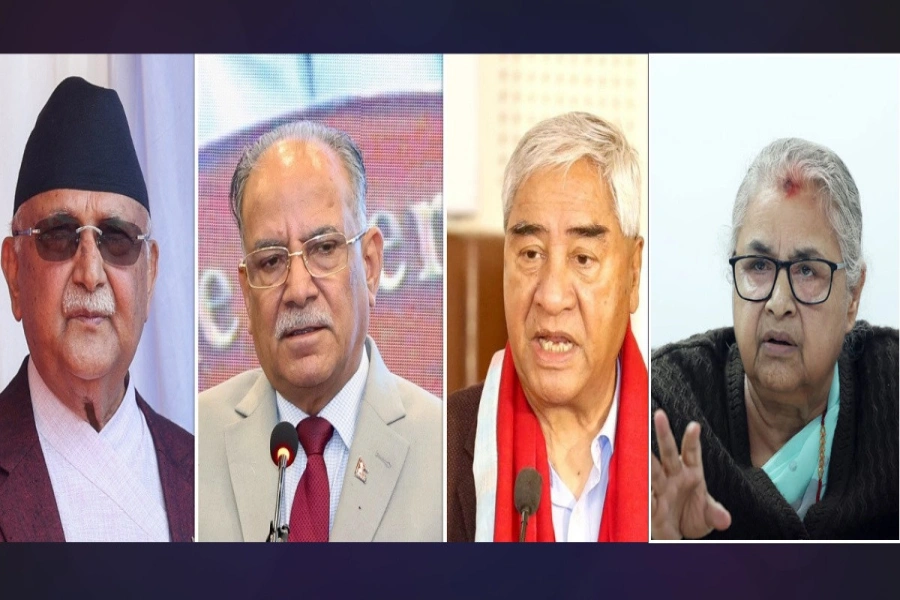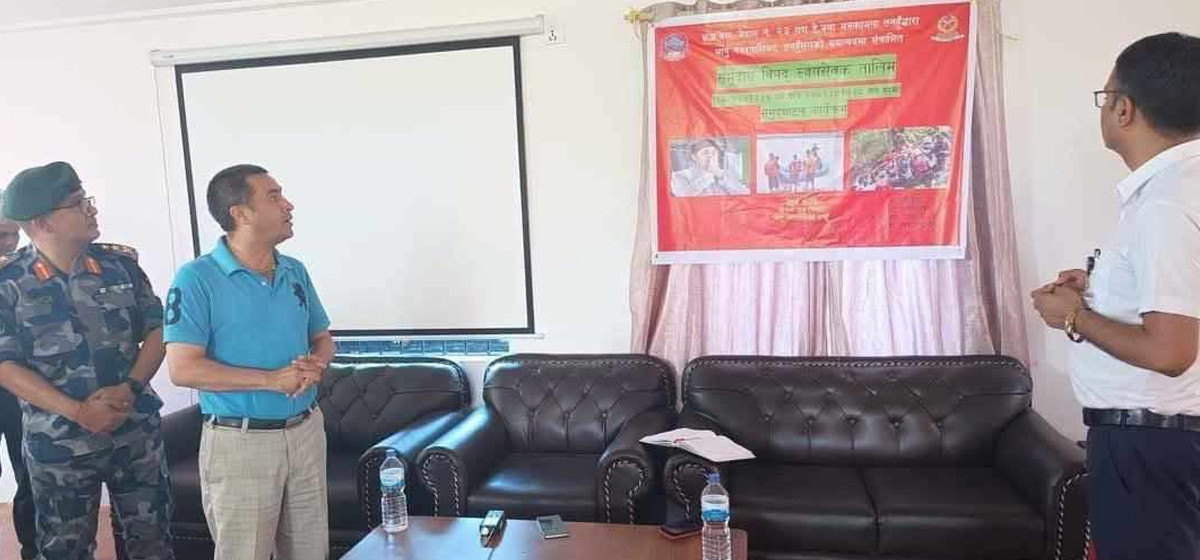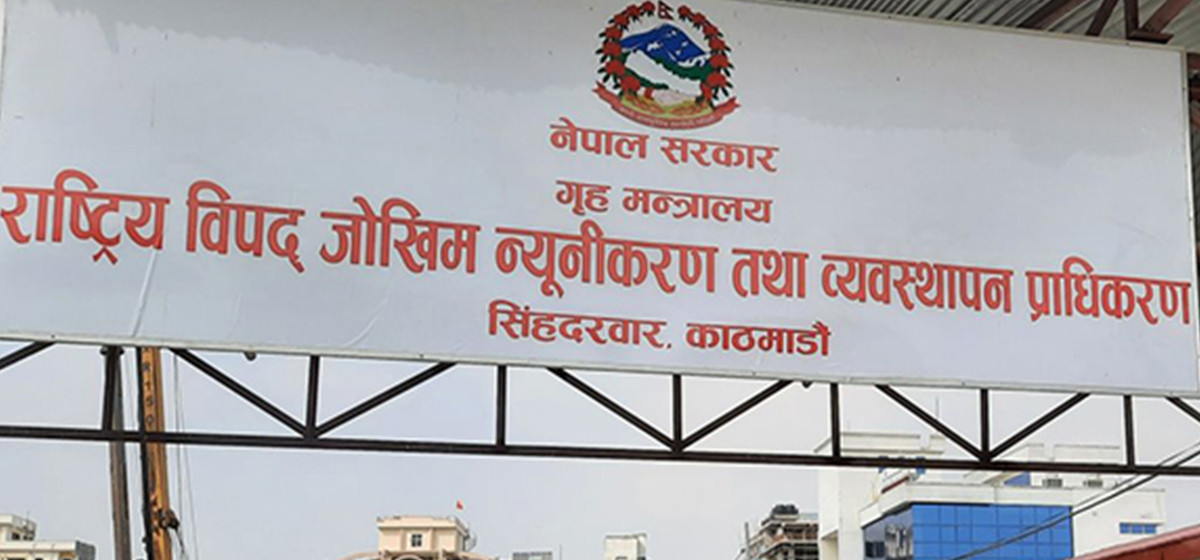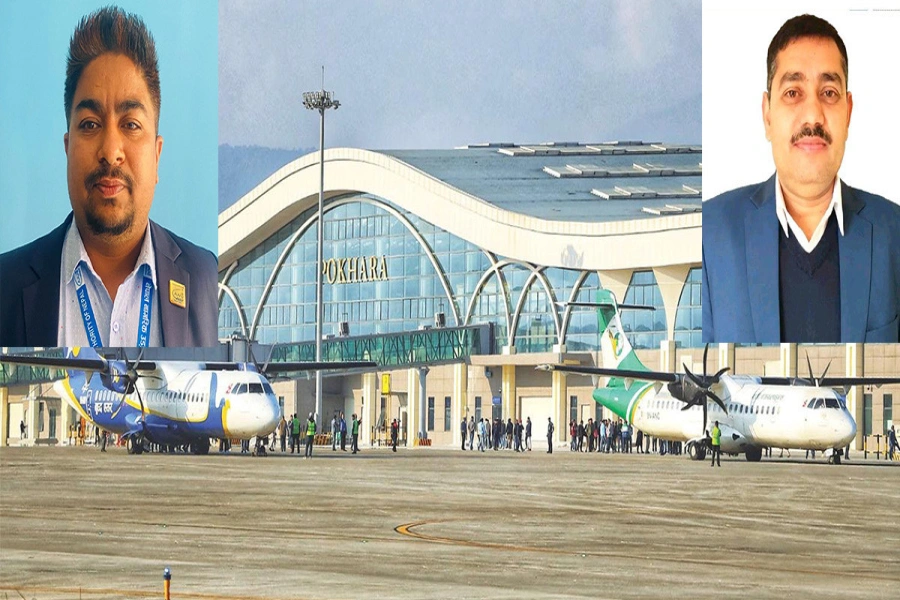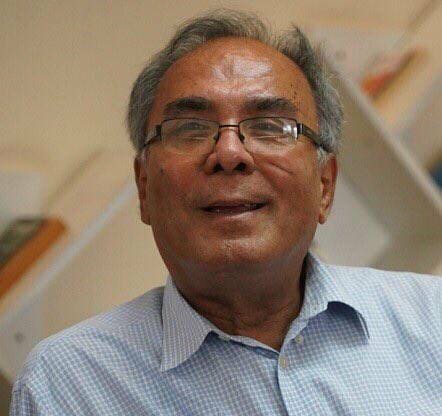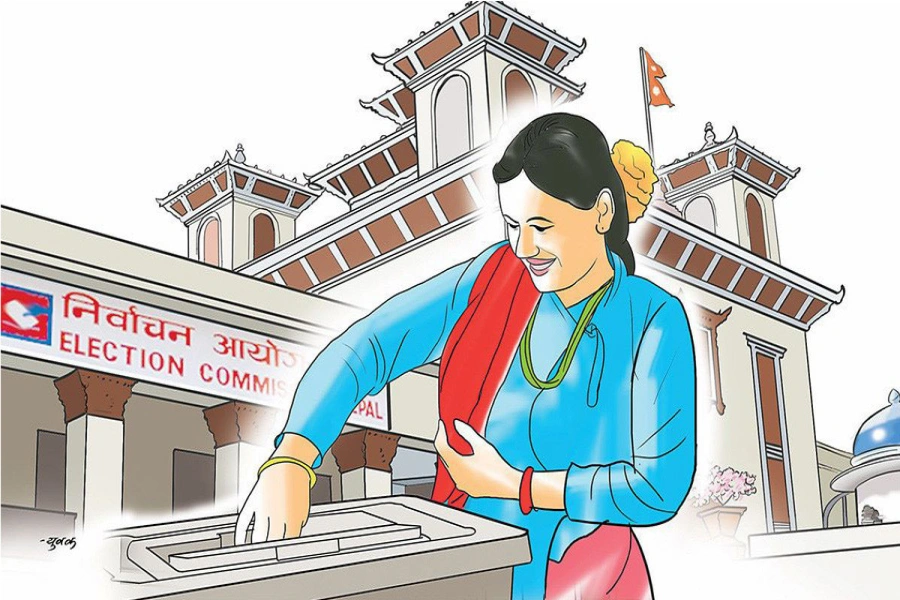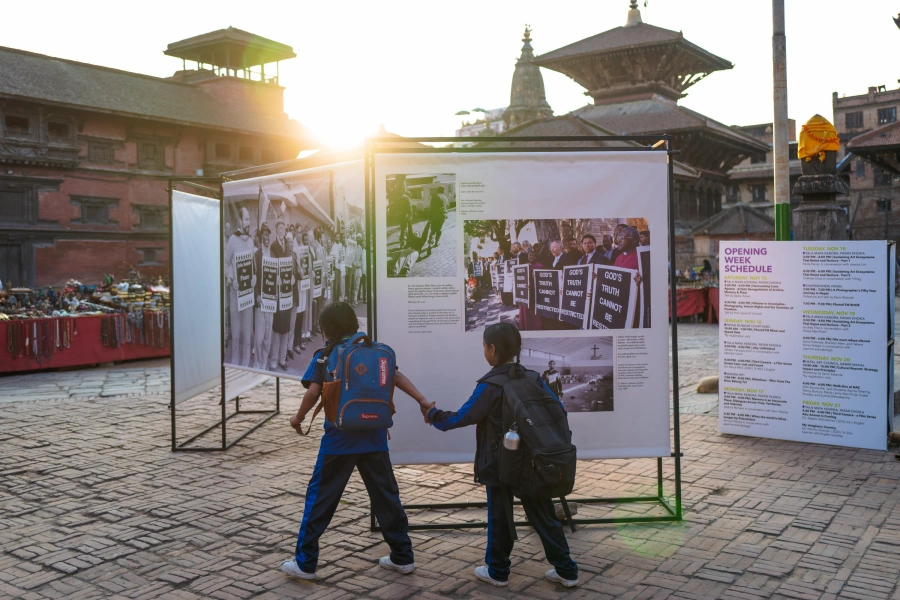The city of Janakpur and its adjoining areas present what can appropriately be called a classic case of development disaster, which I characterize as a situation where essential public services are nonexistent, living conditions are monstrous, and the entire city gives the look of a rotting pile of trash.
In a city of some 200,000 residents, there is no city water supply; no outlet for city sewer; no solid waste collection; no drainage for the discharge of rainwater; and most importantly, a complete lack of road network, except for the sparsely graveled alleys littered with mammoth-size potholes. [break]

Alexandre Gillieron/ fotocommunity.com
And the modern luxuries such as street-lighting, city parks, recreation areas, sports stadiums and museums are unheard of. What the city contains are tiny dwellings, hovel-size stores, unlighted tea-stalls and food-service outlets, and places of worship accessed by city residents as well as visitors from outlying areas. Looking back at the progression of the city over the past several decades, it gives the impression that little of basic conditions has changed, except for a thicker crowd and urban sprawl fast overrunning adjoining villages.
Entering the city after a few years of absence, Kathmandu looked like an earthquake disaster zone, with dug-out city streets filled with mud and dust and a heavy dose of pollutants. A different kind of calamity can be observed in places like Janakpur where public facilities have decayed on their own and nothing is being done to stop this decay, much less to rebuild and upgrade. Growth of city’s population in the face of stagnant or even shrinking supply of public services has turned it into a limitless slum, of the worst kind even from Third World standards!
Based on rudiments of information I gathered from personal contacts with city officials, local politicians, civic leaders, and ordinary people, there is a unanimous consensus that Janakpur development has been stalled not because of the lack of money but for the reason that government largesse and aid funds received for development of city facilities have been mismanaged and misused—even stolen; sometimes 100 percent funds go missing.
Public records show that over the past five years almost Rs 50 crores have been made available annually for district-level development works in Dhanusha, most of it earmarked for Janakpur. Unfortunately, very little of it has been used to build lasting city facilities, which has meant that a large portion of development funds not being spent for purposes intended, and a fraction of allocated funds that does get spent on development works go to waste as the infrastructures are being destroyed as rapidly as they are being built.
A widely observed phenomenon characterizing the waste of development funds in the city has been the starting of road projects close to the monsoon; much of the road gets washed away by the time monsoon is over. Another popular example of wastefulness of public funds is the asphalt-paving of roads with no more than one-inch thickness which starts wearing off and turning into gravel only after a few months of use, requiring new allocation of fund to rebuild. The cycle gets repeated year after year, with no visible achievements in sight in the last few decades.
In an interview, former CA member Sanjay Sah aka “Takla” told me that established local politicians comprised mostly of Nepali Congress and UML workers team up with government-appointed development administration to skim off funds made available for city’s development. Skimming of funds starts with the Central Ministries but a lion share of it goes to local politicians and administrators, including the government-appointed village-development and city development staffs.
Because local-level elections haven’t been held for over a decade, public accountability of development funds is non-existent, which has meant that allocated funds get spent to the full extent but little of lasting value is built.
The public perception is that as much as 80 percent of development funds get skimmed off on their way to implementation, with only a fraction spent on actual work. This pattern of misuse of public funds has continued since the Panchayat days but intensified after the commencing of electoral politics 20 years ago and worsened in the aftermath of CA election in 2008 which, among other things, has produced multiple claimants to the development bootie.
The most recent example of Janakpur’s development debacle has been the interparty disputes over the handling of Rs 1.75 billion loan approved by the Asian Development Bank (ADB) for city’s infrastructure projects focusing on roads, drainage, water supply system and waste disposal. Reportedly, the utilization of loan fund has been stalled for political reasons, ensuing from disagreements over the awarding of construction contracts based on party-affiliation of tenders. The common perception is that city administration colluding with powerful local politicians will divide up much of the funding among themselves, with only a fraction spent on actual development works, much of it to disappear in less than five years.
The labyrinth of corruption surrounding the misuse of public funds has been the key problem in lifting Janakpur out its current rut but there are also other reasons. There is no credible transport system for linking the city to trade routes in India. Two highways spanning from the city to Indian borders have deteriorated rapidly over the past decade and very little of it has been left except for the dirt piles. Funds have been allocated over the years for repairs and maintenance but very little of it has been used to keep the roads in usable condition.
Similarly, the Janakpur Railway—the only exiting railway system in the country—has collapsed, cutting-off the city’s key trade link to India. The railway has operated out of revenue generated from its regular traffic but it lacked funds for major repairs and purchase of new equipment. However, investment capital has been hard to come by, including from the transport sector budget administered by central government. Collapse of the rail transport has been costly for Janakpur and has left much of its hinterlands inaccessible for trade and travel because of the lack of other modes of transport.
Finally, the recently closed city jewel—Janakpur Cigarette Factory, the only manufacturing establishment in the city—had employed some 8,000 people nationwide until twenty years ago, one-third of it in Janakpur. After years of neglect and mismanagement, the factory—a government-owned enterprise—was formally closed earlier this year. Reportedly, the deterioration process started 15 years with the commencing of another cigarette factory owned by then Prince Gyanendra, who used his clout to drive out competition and disrupt the functioning of Janakpur factory.
The substance of this story is that Janakpur’s development will remain stalled for years and decades unless something miraculous happens. Probably the presence of a strong civil society in the city would have played a role in disciplining politicians and administrators but no such thing exists or has ever existed. At the core, Janakpur society and its environs remain rife with stresses of caste-based groupism and myriad other types of divisions and distortions, which seem more pervasive and intense than anywhere else in the country.
Much more than lack of investment funding, social fragmentation has frustrated development efforts in the city, with little hope that the situation would improve anytime soon, irrespective of the outcome of forthcoming CA election. Janakpur has fielded 68 candidates for one single parliamentary seat, an evidence of the factitious nature of local politics and the ensuing lack of consensus to pursue common developmental goals.
Disaster and climate risks and sectoral development planning



